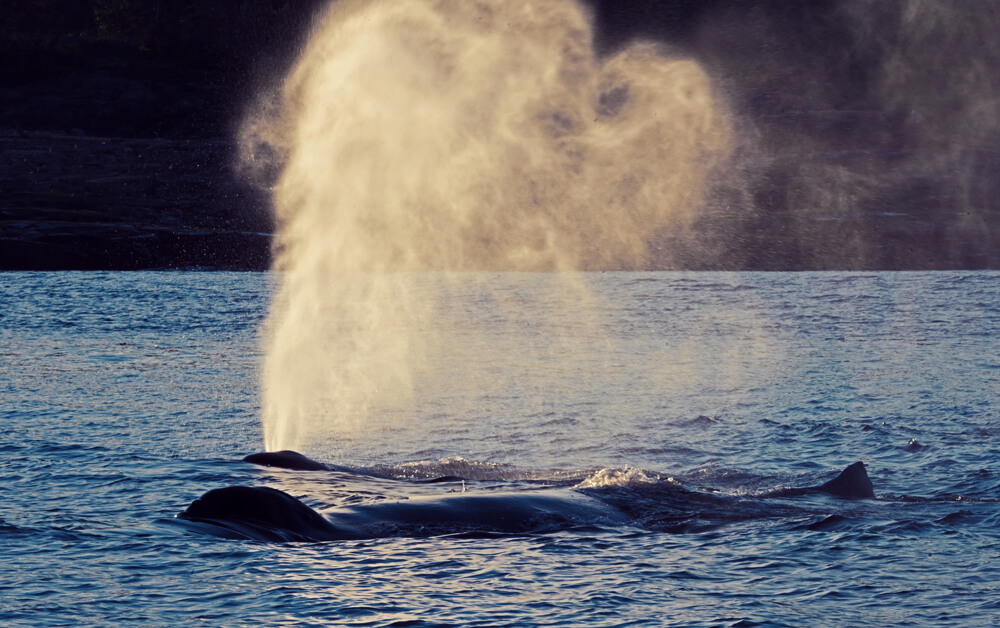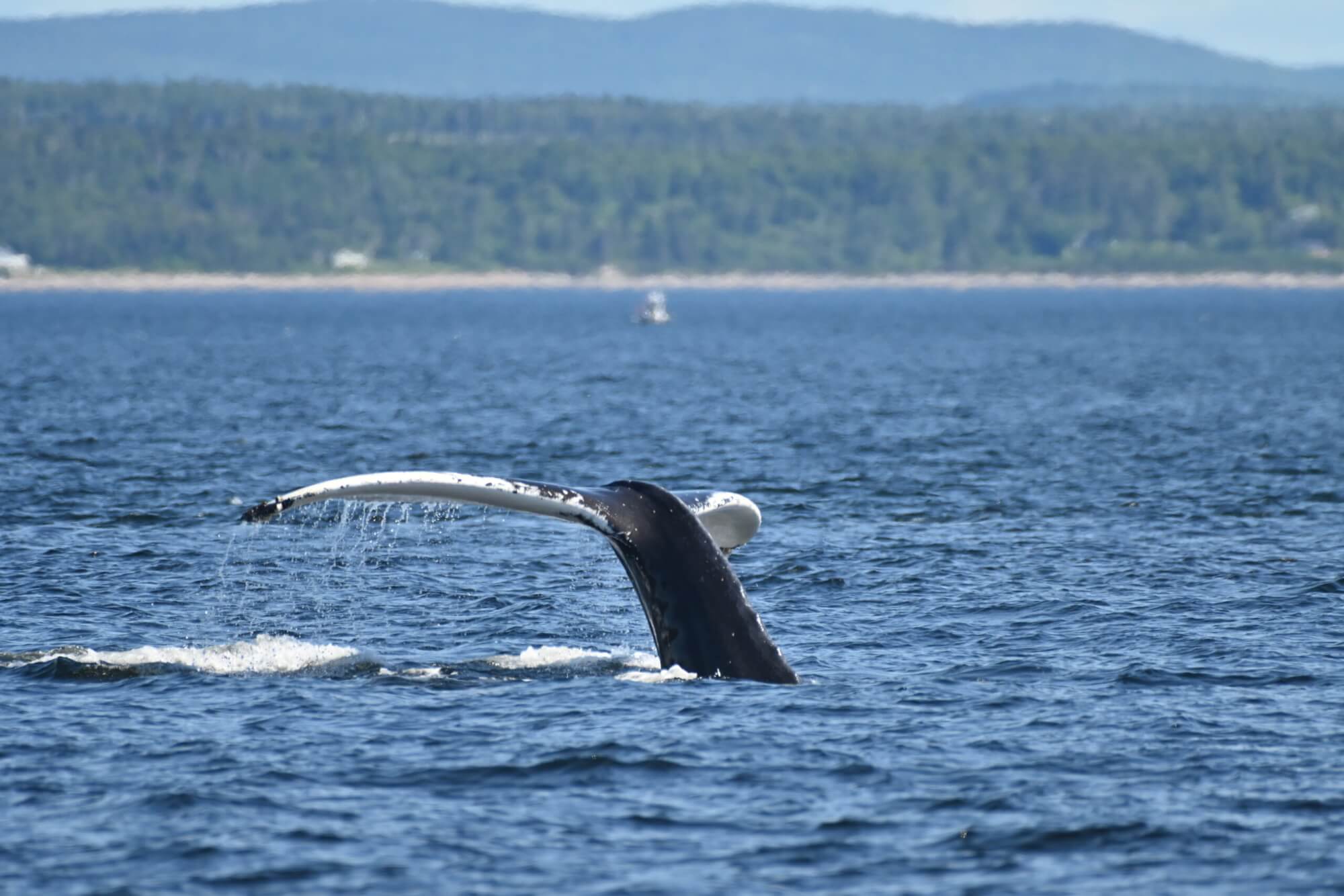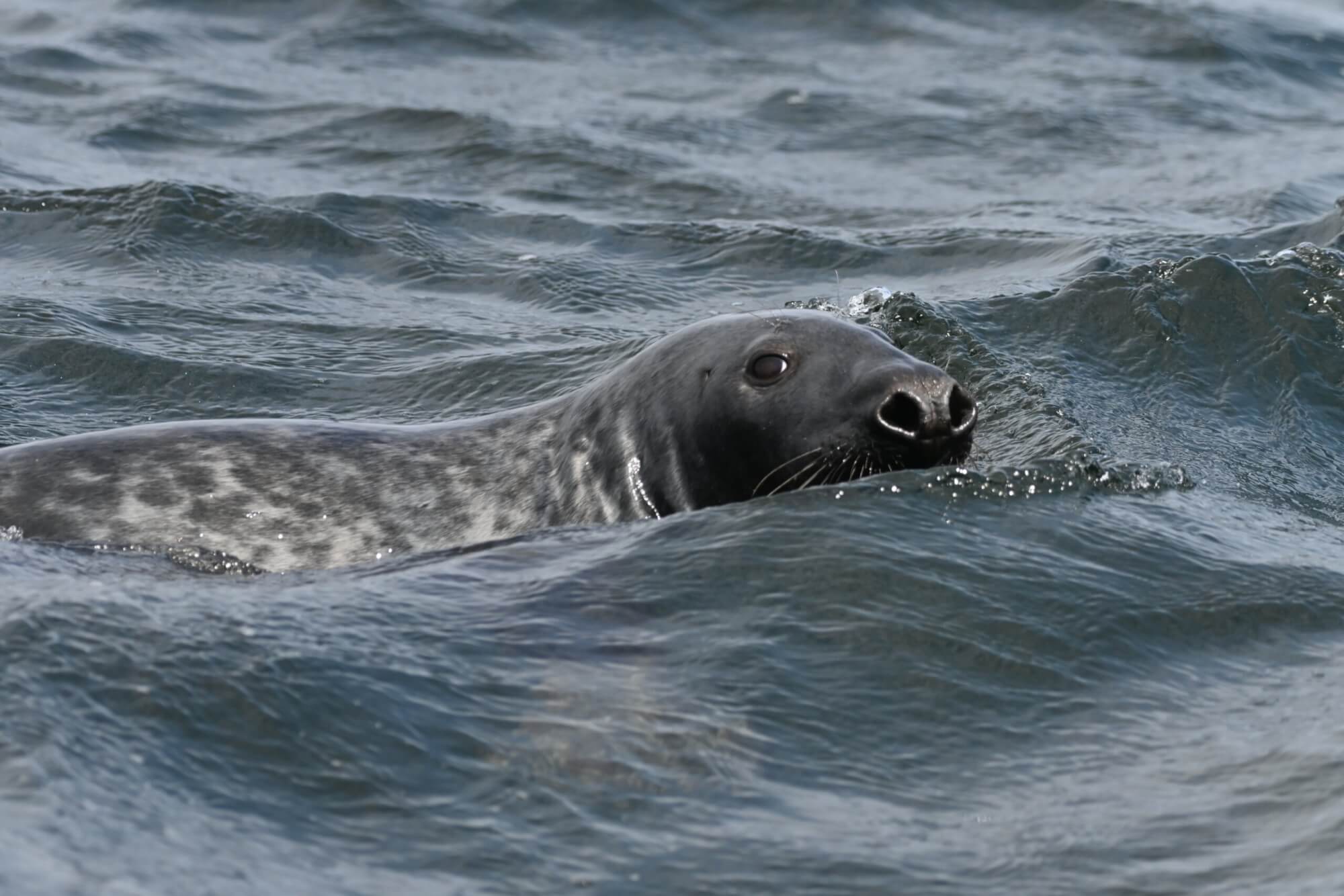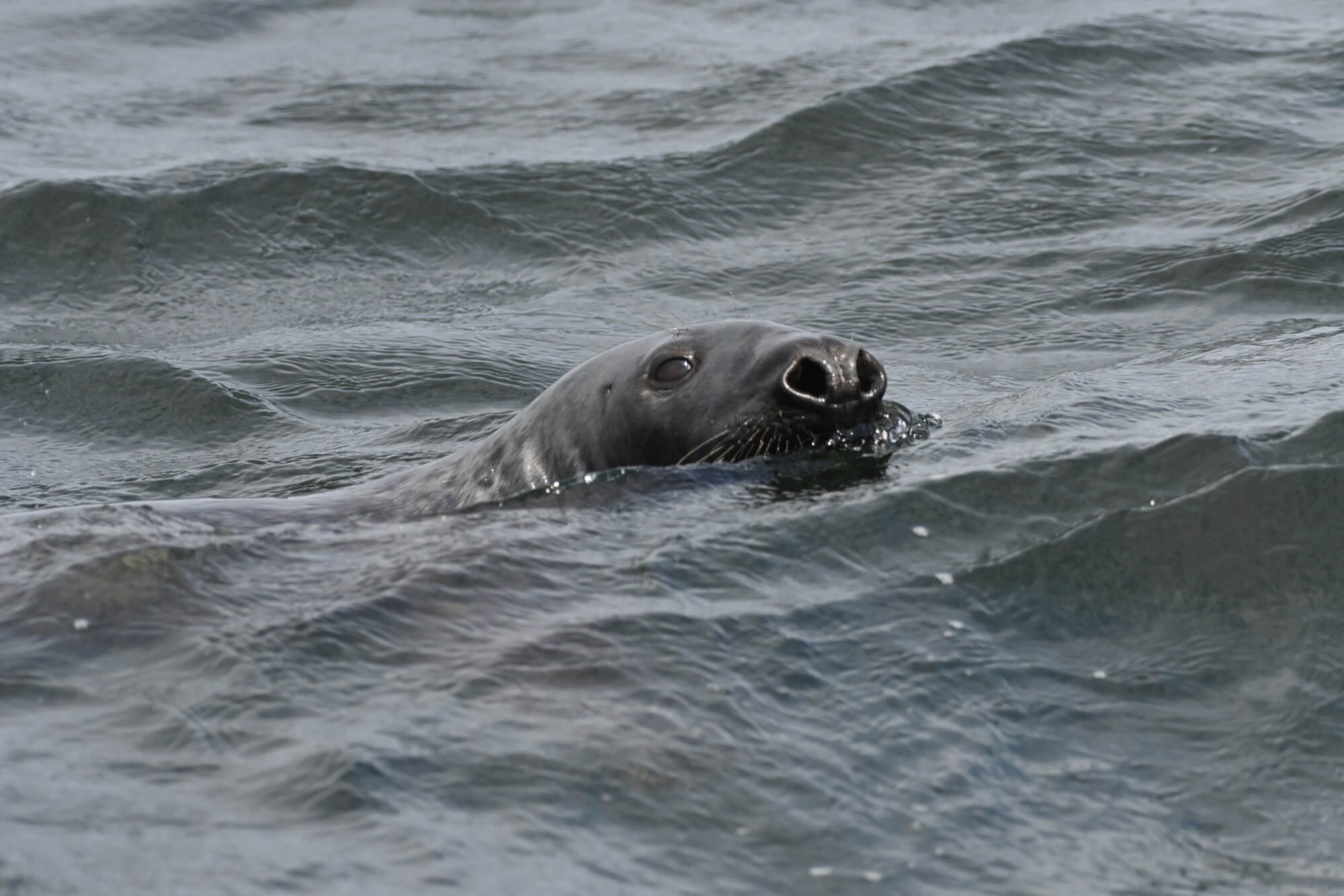Eight humpback whales were identified over the past week in the Saguenay-St. Lawrence Marine Park. At the other end of the river, eight North Atlantic right whales were also spotted! While in some places locals are relishing their first cetaceans of the year, the season is in full swing in the estuary and in the gulf, where a number of species have been observed.
Funny names in the estuary
Research teams and observers alike had their work cut out for them to identify all the whales cruising around the estuary! Of the eight humpbacks, several were well known. H492, alias Irisept, a female known since 1997, was one of them. She owes her name to the shape of the black iris and the small white “7” on her right lobe and near the middle of her tail, respectively. She can also be recognized by the unique shape of her dorsal fin, which appears truncated, and the pronounced relief of some of her vertebrae in the peduncle area. Another individual, H531, a.k.a. Le Souffleur, owes her comical name to a GREMM staff member who recognized this individual on the water while she was illustrating the organization’s annual recap. Another sighting of the week was that of H858, a.k.a. Queen, which got its name from the white crown that adorns the top of its tail fin. Other humpbacks present in the estuary include H626 (Gaspar) and H689 (Aramis).
The presence of a blue whale in the sector also delighted the handful of enthusiasts who were able to observe it. The individual was identified as Jaw-Breaker, which is one of the 15-18% of blue whales in the St. Lawrence that show their tails when they dive. As for the origin of her name, unfortunately it seems to have been lost over time! There may be a connection with the eponymous hard candy, or with an aggressive behaviour that she might have displayed toward other blue whales. Last year, many observers were moved when she was seen with a calf in tow. This year, however, she was travelling alone.
For one native of the region, a plane ride over the St. Lawrence was an opportunity to admire whales through the clear water: “Seeing a blue whale below the surface was magical. From Tadoussac to Les Escoumins, belugas, minke whales, humpbacks and several seals have been reported. In Saint-Siméon, harbour porpoises were seen on the ferry crossing.
Food for foodies!
One marine mammal enthusiast also shares some interesting observations from the Côte-Nord region. “Just lift a rock at low tide and you’ll see how abundant the krill are these days! Between Pointe-Lebel and Godbout, humpbacks seem to be finding enough to satisfy their appetites. Several different individuals were observed in the sector this week. Leaping porpoises, vigilant seals and minke whales stirring at the surface! The place is teeming with life!”
In Pointe-des-Monts, local residents saw their first cetaceans of the season. They were able to admire two humpbacks from shore through a spotting scope: “It was a mother and her calf. They were swimming at the same speed, in sync, and one was much bigger than the other.” Two minke whales made an appearance, one of them even entering the small bay about 15 metres deep. Seals were also present.
One lucky woman was able to capture stunning photos of a fin whale swimming in the Bay of Sept-îles. In Longue-Pointe-de-Mingan, sightings abound for the Mingan Island Cetacean Study (MICS) team, with three minke whales, one blue whale, two fin whales, three humpbacks and eight North Atlantic right whales tallied.
Marine mammals in numbers and exploratory belugas
In Baie-des-Sables, residents also enjoyed their first sighting of the year. It was a large rorqual, but it was impossible to identify the species. In Gaspé Bay, marine mammals are still plentiful! Surface-feeding minke whales have been making frequent appearances and putting on showy displays off Cap Gaspé. The first white-sided dolphins of the season were spotted, as were many humpbacks and a single fin whale. What turned even more heads was the presence of two rarely seen cetaceans in these parts: belugas! Impossible to know what these white whales were doing there, but we hope that they will quickly return to the estuary to join their peers. On the north shore, exploratory belugas were spotted in Baie-Comeau, while on the south shore, others were seen in their favourite hangouts: Cacouna, the estuary and the Saguenay Fjord.
Where are the whales this week? Observations map
These infomations were reported by our network of observers. They give an idea of the presence of whales and in no way represent the actual distribution of whales in the St. Lawrence river. Simply use it for fun!
Click on the whale or seal icons to discover the species, the number of individuals, additional information or photos of the sighting. To enlarge the map, click on the icon in the top right-hand corner. The map works well on Chrome and Firefox, but not so well on Safari.
To display the list of sightings, click on the icon in the top left-hand corner.










